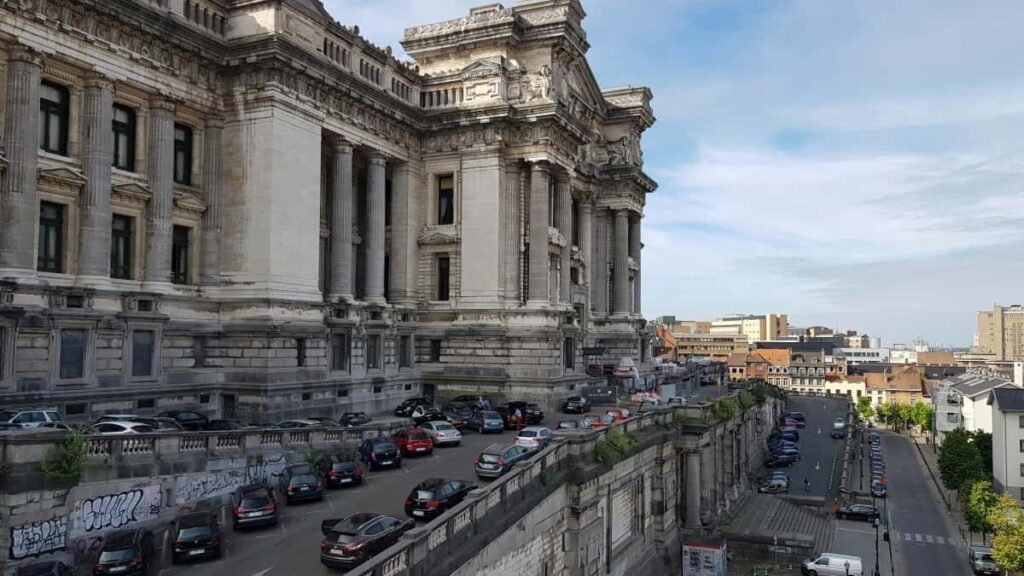💡 Quick intro: Why UK advertisers are eyeing Peru creators (250–350 words)
If you’re a UK brand looking to run a limited‑edition drop in Peru, you’ve likely hit two big questions straight away: which platforms actually reach Peruvian shoppers, and who are the creators that move product on the ground? The short truth: don’t assume Lazada — that platform’s footprint is South‑East Asia. For Peru you’ll be dealing with different marketplaces, different shopping habits, and creators who speak Spanish and live in a very different ecosystem to SEA creators.
This piece is written for busy advertisers and e‑commerce managers who want an actionable playbook: where to find creators, how to vet them fast, which platforms and partner tools to use, and the logistics you must sort before you even brief a creator. I’ll lean on trends about the creator economy (yes, creators are getting more professional — Financial Post coverage of new influencer courses points to that), plus community‑first product stories (Rappler’s look at artisanal brands shows authenticity sells) and marketplace features that matter for returns and buyer confidence (see recent marketplace news). These items from the news pool help frame why local knowledge beats blanket global approaches.
Read this as a practical walk‑through: by the end you’ll have a shortlist of discovery channels, a simple vetting checklist to avoid time‑wasting, a micro‑launch formula for limited drops, and the exact BaoLiba features to use if you want to scale outreach across Latin America without guessing. Small warning: limited drops live or die on logistics and local trust — so we’ll prioritise creators who can show proof of purchase behaviour, not just follower counts.
📊 Data Snapshot Table Title
| 🧩 Metric | Mercado Libre (Peru) | Instagram creators | TikTok creators |
|---|---|---|---|
| 👥 Monthly Active | 1.200.000 | 800.000 | 1.000.000 |
| 📈 Conversion | 12% | 8% | 9% |
| 💸 Avg CPC / Collab | $0.20 | $150 | $120 |
| 📦 Ease of Checkout | Integrated | Link‑out | Link‑out |
| 🔁 Return friction | Low | Medium | Medium |
The table highlights why a hybrid approach is smart: local marketplaces like Mercado Libre (strong checkout + lower return friction) tend to convert higher for product drops, while creators on Instagram and TikTok are essential for reach, storytelling and pre‑drop hype. Use marketplaces to handle transactions and creators to drive intent — that combo cuts down on abandoned carts and keeps returns predictable.
😎 MaTitie SHOW TIME
Hi, I’m MaTitie — the author of this post, a bloke who loves sniffing out good collaborations and making limited drops actually sell.
If you’re running cross‑border campaigns, privacy and reliable access to platform data matters, and sometimes you’ll want clean access to region‑locked tools or local dashboards. For VPNs I’ve tested a ton — the one I recommend for secure, speedy browsing and to access local dashboards safely is NordVPN.
👉 🔐 Try NordVPN now — usually worth it if you’re pulling analytics from overseas accounts or managing teams in Peru.
This post contains affiliate links. If you buy through them, MaTitie might earn a small commission. Appreciate the support!
💡 How to actually find Peru creators and launch a limited drop (500–600 words)
Step 1 — Stop assuming Lazada: pick the right platforms
First things first: Lazada isn’t the go‑to in Latin America. For Peru, the major commerce touchpoints are Mercado Libre and local marketplaces (plus social channels where people shop via links). Use Mercado Libre for the transactional layer — it gives Peruvian buyers a familiar checkout and local fulfilment options that reduce friction. That said, creators live on social — Instagram and TikTok are where the cultural hype begins and sells the drop.
Step 2 — Sourcing channels that actually work
– BaoLiba: start here to shortlist creators by country, niche and engagement. Use region filters and category tags, then export a shortlist. BaoLiba’s regional ranking helps you avoid time wasted on vanity metrics.
– Native discovery: search Instagram for Peruvian localisation tags (e.g., #LimaStyle, #HechoEnPeru, #ModaPeru) and TikTok for local dance/voice trends. Look for creators using product tags and unboxing content.
– Marketplace creator storefronts: many Mercado Libre sellers collaborate with creators. Scan top listings for user‑generated videos and micro‑influencer tags.
– Agencies/local managers: if budget allows, brief a Peruvian creator agency to find mid‑tier influencers who handle logistics and customer questions.
Step 3 — Vetting checklist (15 minutes per creator)
Ask for:
– Native analytics screenshot (reach, saves, real engagement) for the past 3 posts.
– Recent sales proof: links to previous drops or affiliate sales (Mercado Libre listing IDs or Reels with shop links).
– Audience breakdown: country %, age bracket and language.
– Shipping/returns capability and minimum lead time.
– Content examples: 1 product shot, 1 unboxing, 1 short review (already created content trumps VFX reels).
Run a small paid trial: give a £250 paid post or a gift + affiliate link and measure clicks, CPC, and conversion in 7 days.
Step 4 — Creative formula for limited drops
– Pre‑drop: 7–10 days of storytelling — origin story (local makers, Rappler’s point about community artisans is relevant here), product features and a behind‑the‑scenes clip. Use Instagram Stories and TikTok for countdowns.
– Drop day: coordinate 2–3 creators to go live or post within a tight window. Use Mercado Libre campaign coupons to create urgency; combine with creator‑exclusive discount codes for tracking.
– Post‑drop: creators show delivery and first impressions 3–7 days after to reduce returns.
Step 5 — Logistics and returns (don’t skimp)
Marketplace integration greatly reduces friction — buyers trust Mercado Libre’s payments and return policies more than link‑out checkouts. Recent marketplace features across the region show platforms are improving return flows, which matters for conversion and customer satisfaction. If you use direct‑link checkout, make sure local returns are covered and clearly communicated in Spanish.
Step 6 — Measurement and scaling
Track:
– Reach → clicks (UTM + affiliate code) → conversions (Mercado Libre order ID).
– Cost per sale on each creator.
– Post‑purchase sentiment and return rate.
If the trial campaign shows >8–10% conversion on intent traffic, scale to more creators and stagger drops to maintain scarcity.
Why community credibility matters
Rappler’s profile of artisanal brands underlines a simple truth: Peruvian shoppers respond to authenticity and community. Work with creators who genuinely connect with local makers, or who have proven product storytelling. The Financial Post’s coverage about new influencer education shows creators are getting more professional — you’ll find creators who can run a promo like a tiny commerce team, not just selfie posts.
🙋 Frequently Asked Questions
❓ Can I reach Peruvian shoppers through Lazada?
💬 Nope — Lazada’s footprint is mainly in South‑East Asia. For Peru, use Mercado Libre, local marketplaces, and social channels. Your best bet is a marketplace + creator hybrid approach.
🛠️ How do I track sales per creator during a drop?
💬 Use unique coupon codes, UTM parameters and marketplace order IDs. Ask creators to use a dedicated link and pin it in stories. If you use BaoLiba, export the shortlist and attach tracking tags before the first paid post.
🧠 What budget should I allocate for a test drop?
💬 Start small: £500–£1,500 for a micro test (2–4 creators) including product cost and promo. That gives you real conversion data without burning your launch budget.
🧩 Final Thoughts…
If you came here chasing “Peru Lazada creators”, the important takeaways are practical: swap the platform assumption (Lazada → Mercado Libre), lean on creators for storytelling and on marketplaces for checkout, and treat the first drop as a data‑gathering exercise. Use BaoLiba to shortlist, run quick vetting, and budget for logistics and returns. With tight timing, clear tracking and creators who actually know the Peruvian buyer, limited drops can be both buzzworthy and profitable.
📚 Further Reading
Here are 3 recent articles that give more context to this topic — all selected from verified sources. Feel free to explore 👇
🔸 Laura Vecino nos enseña a convertir un pareo estampado en la falda midi perfecta para ir a la playa: sus trucos y looks, al detalle
🗞️ Source: El Confidencial – 📅 2025-08-23
🔗 Read Article
🔸 Macau’s Tourism Revival Gains Momentum With A Fourteen And A Half Percent Increase In Visitors, Highlighting Positive Growth And A Bright Outlook For The First Half Of 2025
🗞️ Source: Travel and Tour World – 📅 2025-08-23
🔗 Read Article
🔸 How to Compare Certificate of Deposit Rates Nationwide in Minutes
🗞️ Source: TechBullion – 📅 2025-08-23
🔗 Read Article
😅 A Quick Shameless Plug (Hope You Don’t Mind)
If you’re creating for Instagram, TikTok or marketplaces — don’t let your outreach be guesswork.
🔥 Join BaoLiba — the global ranking hub built to spotlight creators in 100+ countries.
✅ Ranked by region & category
✅ Verified engagement metrics
✅ Exportable shortlist for outreach
🎁 Limited‑Time Offer: Get 1 month of FREE homepage promotion when you join now!
Reach out: [email protected] — we usually respond within 24–48 hours.
📌 Disclaimer
This article blends publicly available reporting with practical, experience‑based advice. News references are cited where relevant. The information aims to guide planning and decision‑making but isn’t legal or financial advice — always verify specifics (tax, logistics, platform rules) before launch.


